

Across from the lunch table at the Fathom office sits a big translucent orange rectangle: our 3D printer. It caught my eye the first day of my internship this summer, and when I learned about our weekly crafts afternoon (aka Tuesday Knit Night), I decided that in addition to learning to crochet, I'd try out the printer. Checking the logs, though, I learned it had been out of use since 2016, when I was in middle school.
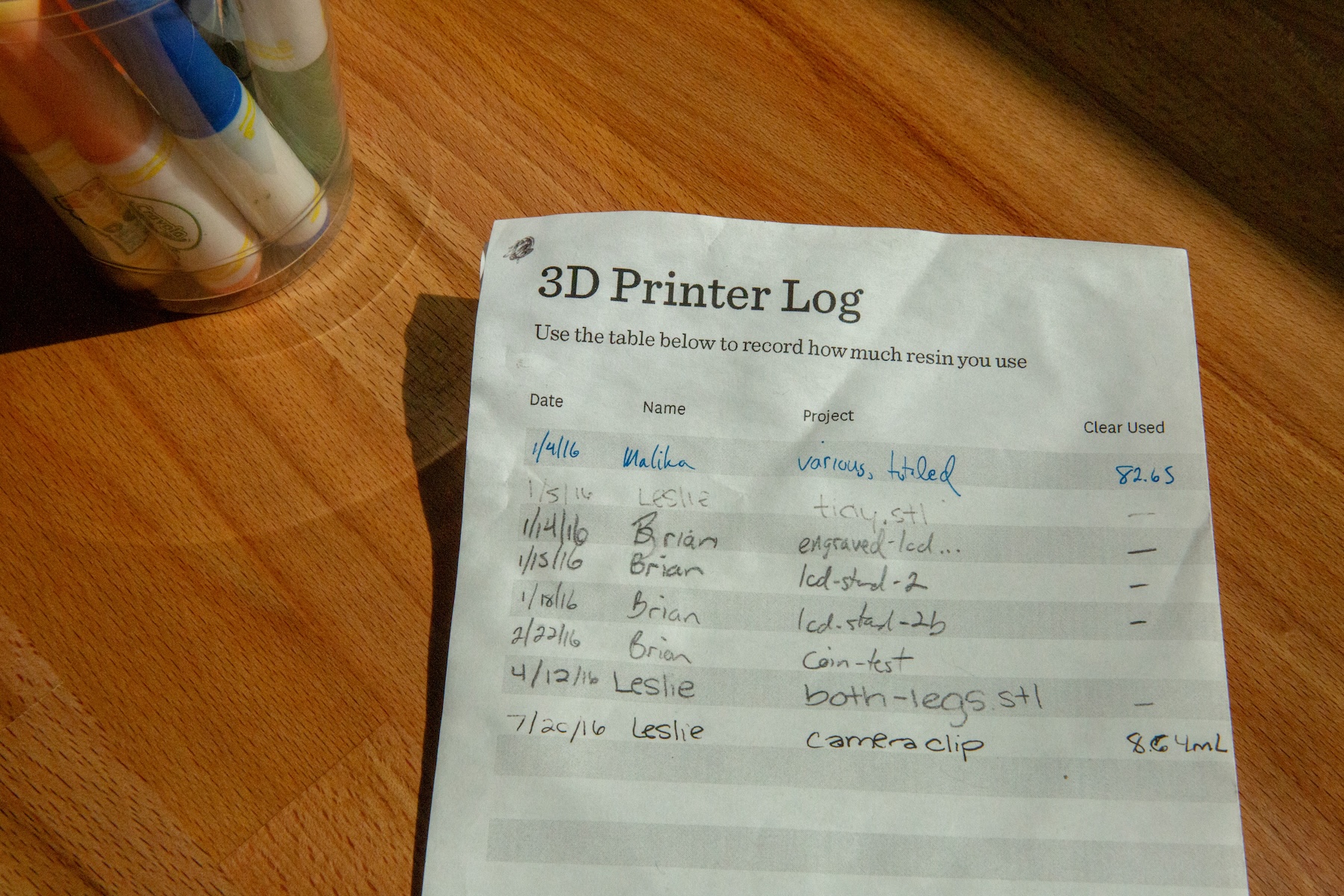
And years of disuse led to complications. Unlike traditional filament-based 3D printers, the office printer is resin-based: there's a tank of liquid resin, and the printer shoots precise UV lasers to harden it in exactly the right places to create the model. The resin tank, which is supposed to be regularly detached and cleaned, had become stuck to the printer from excess resin that had hardened in the sunlight over the years.
And due to some gradual mispositioning, the models were being printed too close to the metal print bed, making them almost impossible to remove. (This particular issue was fixed by deliberately misaligning prints in the software, but not before I sliced my hand open a few times pushing all of my weight down to detach prints that would suddenly give way.)
Then there were the issues that came from my own lack of knowledge. I'd had a little experience with traditional filament printers, but never resin ones. There were many mistakes made. For example, it turns out you have to orient the print diagonally to prevent warping. Also, keeping the printer next to a sunny window lets the resin cure too fast, so it's been moved to the north-facing side of the office. Gradually, test print after test print, I honed in on the right method, and started getting actually usable results.
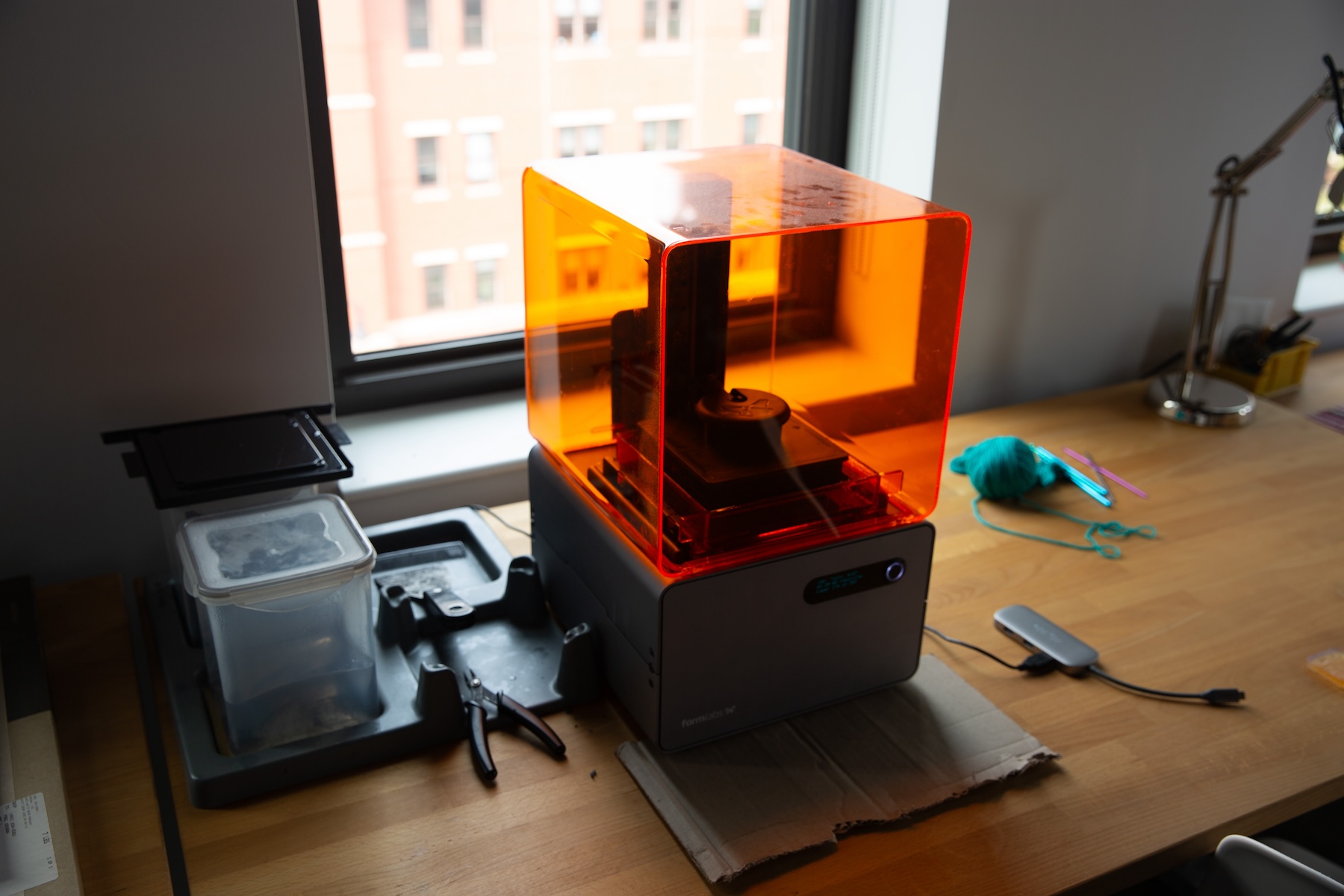
Modeling
Next, I had to figure out what to print. Inspired by these beautiful national park slices, I decided to make my own slices; 3D maps of all the places I'd lived.
I experimented with using detailed LIDAR data, but it was hard to make out specific buildings, and crashed Blender half the time I used it.
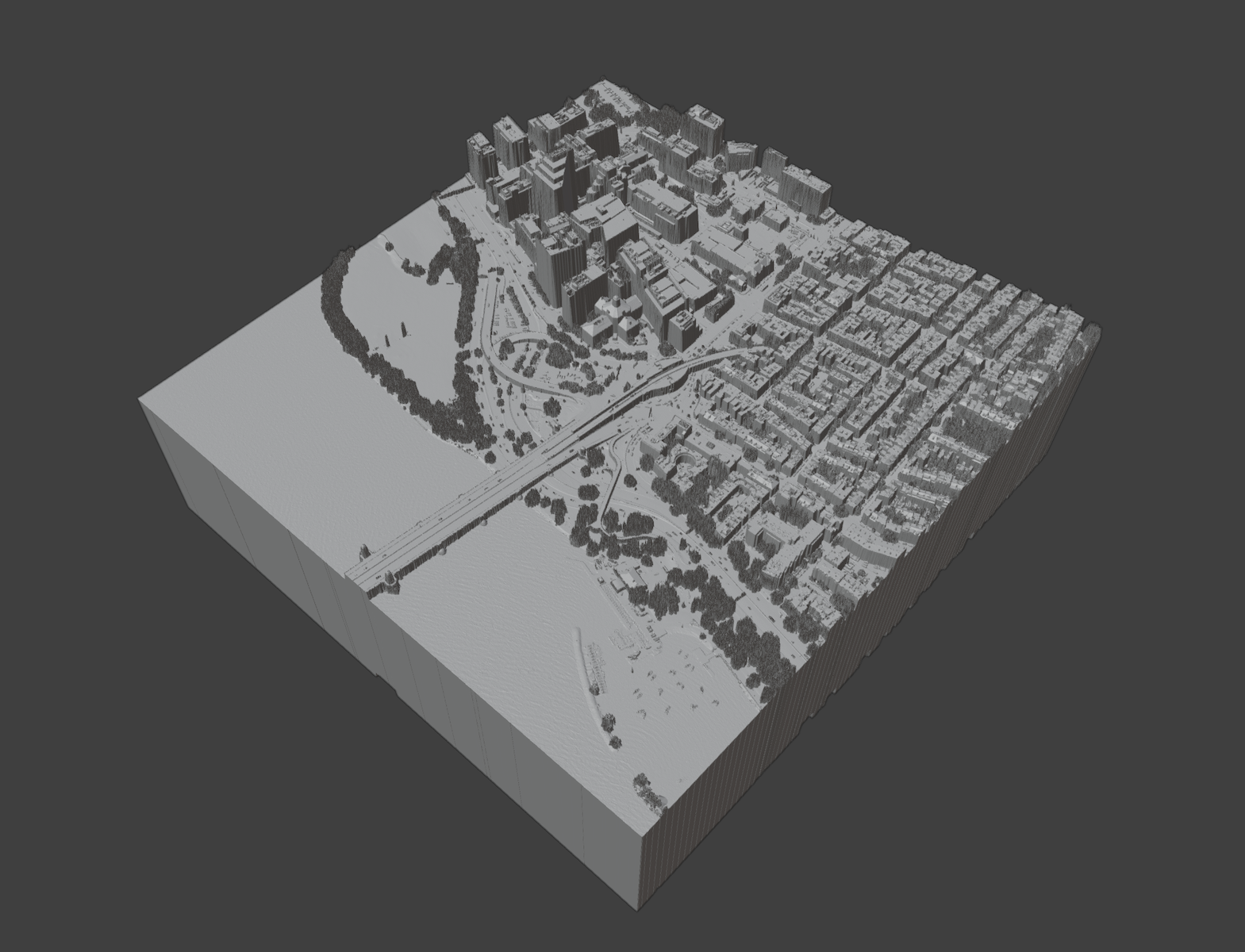
Instead, I settled on a simpler topographic map style, with roads and paths engraved into the terrain, and only the building itself rising up. To test it out, I made a map of the Fathom office, and once I had tuned in the settings, I finally had a working print:
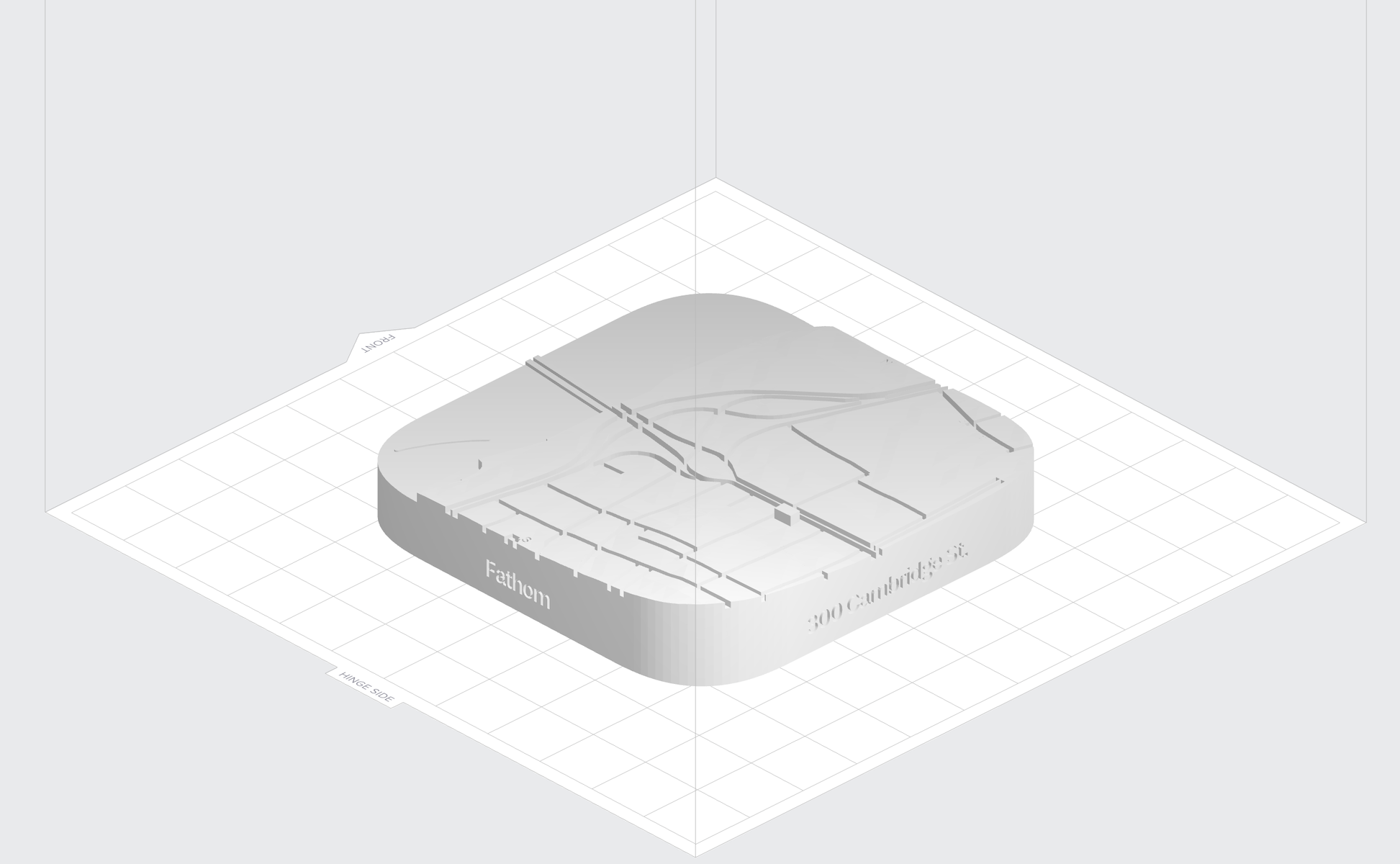

From there, all that was left was to hand-model the maps of my living spaces, which started off slow, but I eventually got good at doing it quite quickly. Then each morning, armed with a new 3D model, I'd start the printer. By lunchtime, the print was done and ready to be rinsed off in a bath of isopropyl alcohol, and finally left to cure in the sunlight until the next morning.
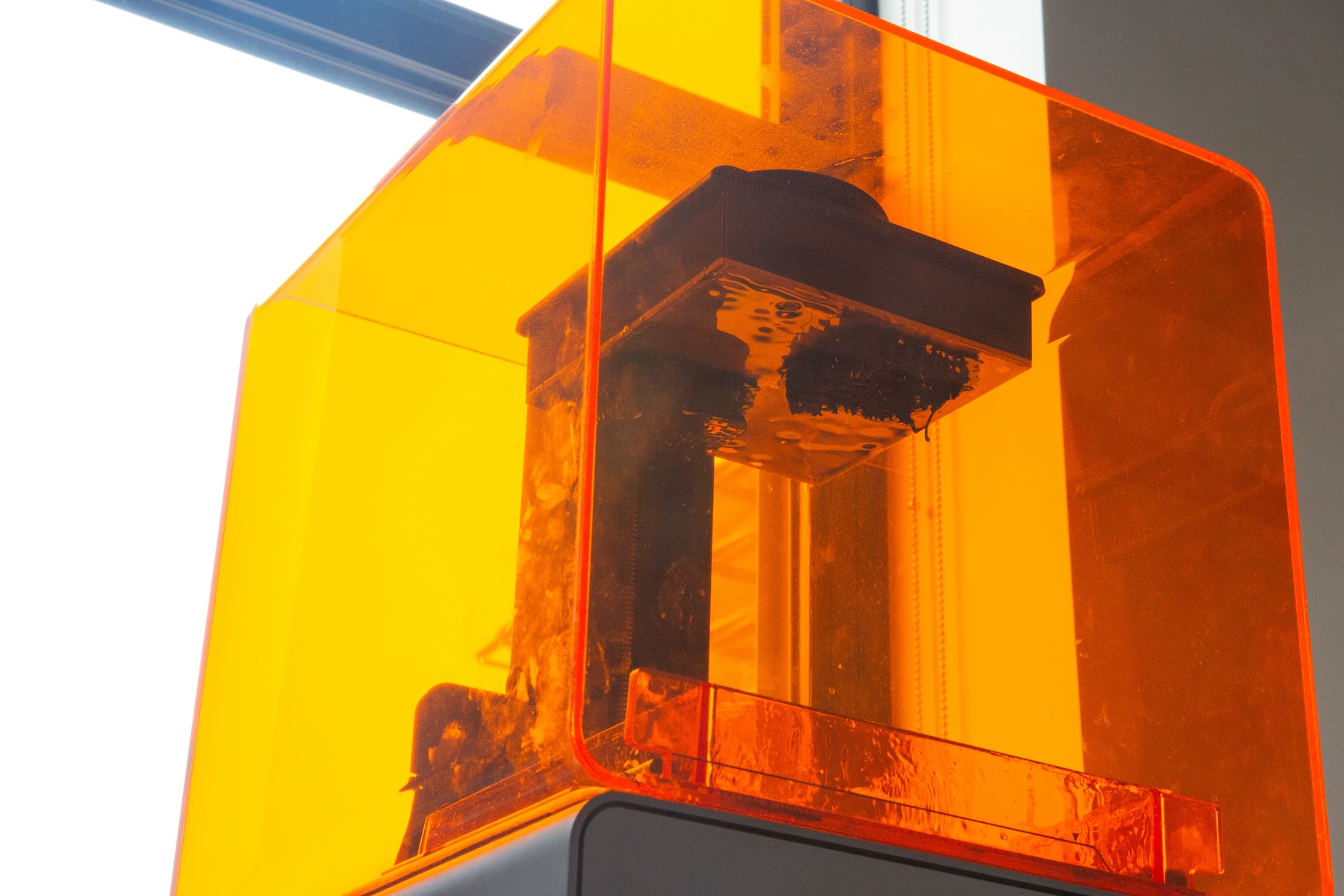
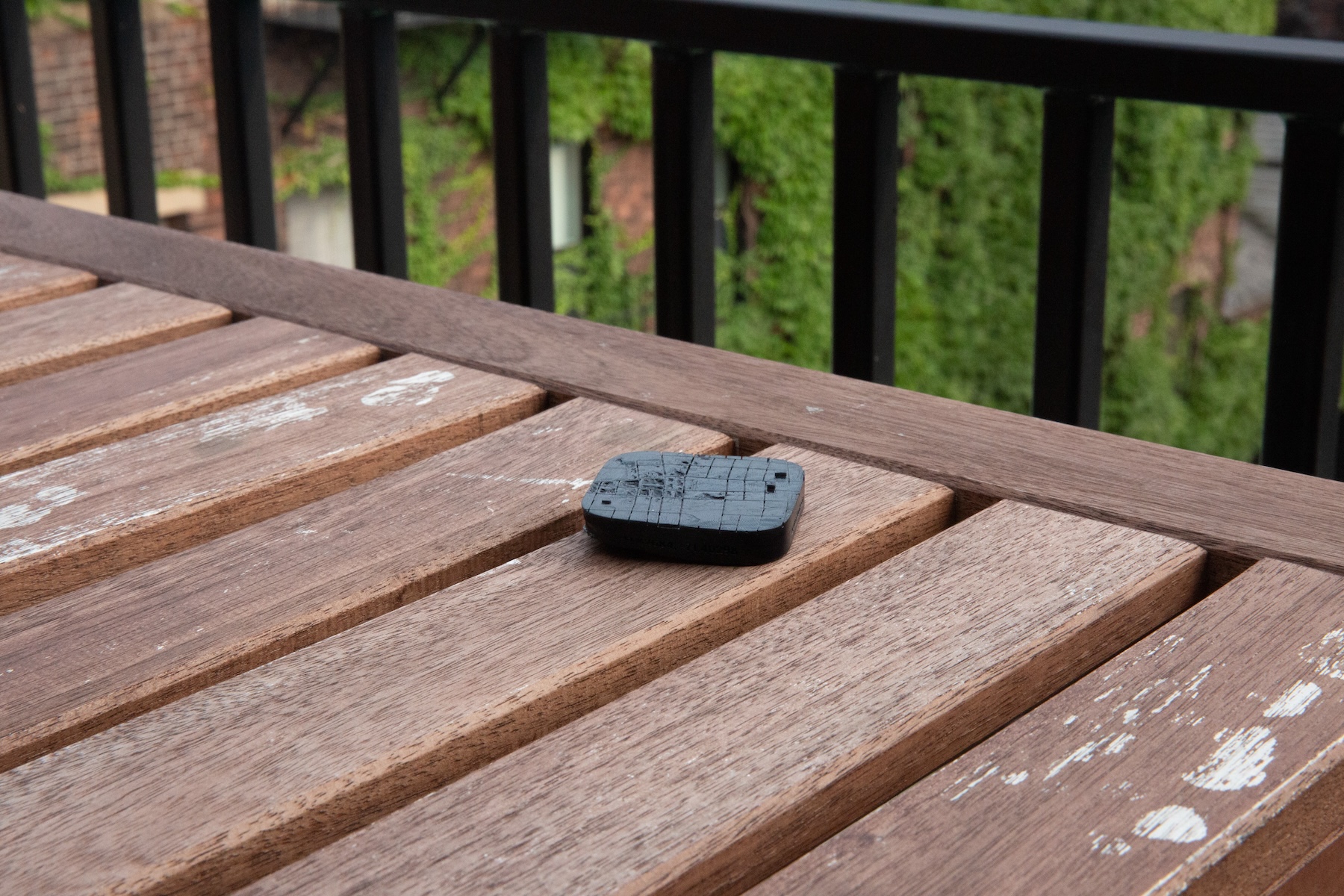
In total, I modeled and printed seven mini maps, and the 3D printer is now ready for the office's next project, whatever that might be.
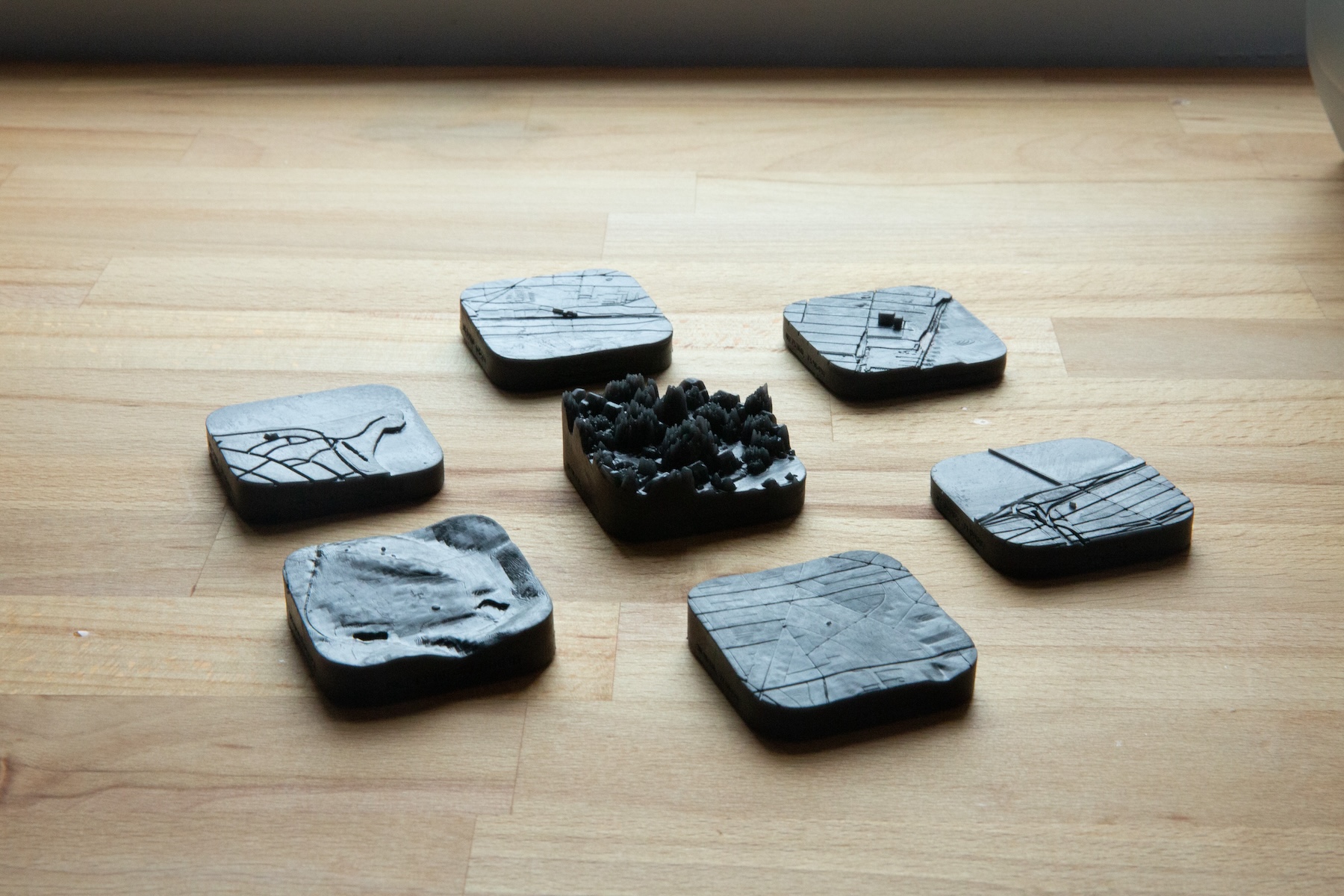
We’d love to hear what you’re working on, what you’re curious about, and what messy data problems we can help you solve. Drop us a line at hello@fathom.info, or you can subscribe to our newsletter for updates.